Toyin Ojih Odutola explores race and identity in black and white

Though she’s conceived four solo shows with New York’s Jack Shainman Gallery in as many years — her latest, Of Context and Without, which opens this week — Toyin Ojih Odutola has always felt that ‘there was this period where people weren't getting the work,’ she says. ‘They weren't getting the narrative.’
While that may be true, the Nigerian-born, New York-based artist’s hypnotic, ballpoint pen ink and charcoal figurative drawings have earned her spots in the Studio Museum in Harlem’s FORE and Black: Color, Material, Concept surveys and the To Be Young, Gifted and Black group show Hank Willis Thomas curated at Johannesburg’s Goodman Gallery. She’s also been the focus of solo shows at the Contemporary Art Museum St. Louis and the Indianapolis Museum of Contemporary Art.
‘To be black today is exhausting enough, but then to be a black image-maker, I have two choices: I can address this frustration that I’m feeling, not just as an artist but as a person, and engage in that in my work,’ says Ojih Odutola, who was upset with the ‘quick reads’ her work was getting. ‘A lot of times you look at a black woman’s work, people think it has to be about certain things, so I really wanted to play with identifying things. I really wanted to confuse people.’
As such, Of Context and Without begins with a group of works made with white charcoal on blackboard. ‘What I really loved is that when you use black as a demarcating tool and replace it with white it suddenly makes things really, really slippery and people get uncomfortable because they can’t delineate anything,’ she says. ‘All of a sudden this idea of context is very suspect and the content becomes unreliable.’ To wit, an image of a black runway model is rendered in white charcoal (and somewhat extra-terrestrial).
There are also grayscale figures with shimmering (seemingly pupil-less) eyes that confuse form and image even further, allowing the artist to address race and blackness on the continent with a twist on her iconic pen-and-ink drawings. ‘People expect me to draw black people and obviously that’s not helping the situation, people are still getting killed and mistreated, and that’s not what I want to address. I want to address the image of blackness that society can’t seem to address properly.’
After seeing a commentator on a CNN panel discuss the problem of seeing images of Michael Brown as a concept — instead of a person — ‘that hit me like a ton of bricks. We’re not even looking at all these people, we’re just seeing them as ideas,’ says Ojih Odutola. ‘Once you put blackness on someone you don’t even see them, the blackness is an obfuscating element that obstructs anything that’s behind.’ To redirect the conversation she began a series of drawings, dubbed The Treatment, of famous white men — whose identities she prefers not to reveal — with black faces and simple pencil outlines for their hair and clothes that transform these iconic visages into anonymous mugs.
‘The reason for my seeming evasiveness towards readily identifying things is because it feels like the act itself is a disservice,’ says Ojih Odutola. ‘To immediately identify means to give a swooping read, something singular and not at all multifaceted, which is what the actually mark-making of my work has always been about: the multifaceted nature of people, things, and situations.’ Two dozen of these are installed at Shainman’s 20th Street gallery.
In one final play on identity, the artist’s includes renderings of herself. One is a white charcoal self-portrait that was titled Subway Selfie (Or be Thankful to Exist), which addresses the need to capture ourselves. The second is larger-than-life-sized marker piece of a nude Ojih Odutola, originally titled What’s on offer but is now called The Object is the Technique + The Technique is the Object (after a Francis Bacon quote).
‘I love the idea of that quote because it’s about image and not about me. I want the marks to be the subject,’ she says, admitting, ‘I'm exposing a lot in this show. In particular, I'm exposing my process but I am doing this because I want people to see what I see in the makings of these works that often doesn't get shown in the final product. It's like I'm welcoming them into my studio for a moment with each drawing.’
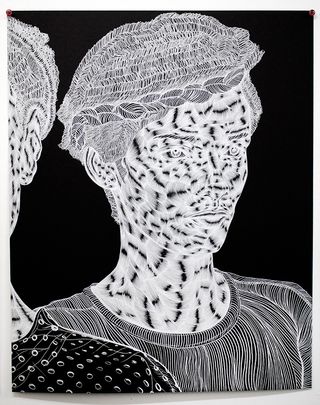
Best known for her hypnotic, ballpoint pen ink and charcoal figurative drawings, Odutola’s new show begins with a group of works made with white charcoal on blackboard. Pictured: Changing Circumstances: Changing Attitudes, 2015, charcoal on board
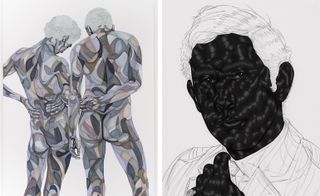
‘What I really loved is that when you use black as a demarcating tool and replace it with white it suddenly makes things really, really slippery and people get uncomfortable because they can’t delineate anything,’ she says. Pictured: (L) Quality Control, 2015, marker and pencil on paper, and (R) The Treatment 14, 2015, pen ink, gel ink and pencil on paper
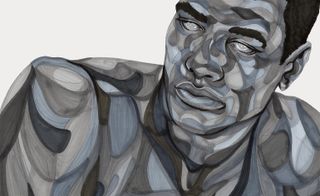
There are also grayscale figures with shimmering (seemingly pupil-less) eyes that confuse form and image even further, allowing the artist to address race and blackness with a twist on her iconic pen-and-ink drawings. Pictured: Mineral Survey, 2015, marker and pencil on paper
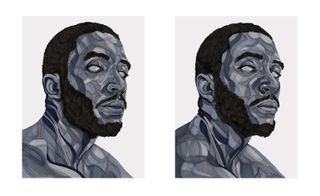
‘People expect me to draw black people and obviously that’s not helping the situation, people are still getting killed and mistreated, and that’s not what I want to address. I want to address the image of blackness that society can’t seem to address properly.’ Pictured: Soil Erosion, 2015, marker, pencil and gel ink on paper, diptych
INFORMATION
Of Context and Without opens on 11 December and runs through 30 January
Images courtesy of the artist and Jack Shainman gallery
ADDRESS
Jack Shainman Gallery
513 West 20th Street
New York, New York
Wallpaper* Newsletter
Receive our daily digest of inspiration, escapism and design stories from around the world direct to your inbox
-
 Spanish design studio Masquespacio's new HQ is a historical mansion bursting with colour
Spanish design studio Masquespacio's new HQ is a historical mansion bursting with colourDesign studio Masquespacio presents its new home and office, a bold and unique space in a beautifully refurbished historic villa near Valencia
By Léa Teuscher Published
-
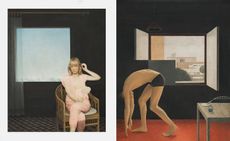 Surreal, uncanny, seductive: step into Graham Little’s world
Surreal, uncanny, seductive: step into Graham Little’s worldScottish artist Graham Little presents his first US retrospective at The FLAG Art Foundation in New York
By Hannah Silver Published
-
 Junya Ishigami designs at Maniera Gallery are as ethereal as his architecture
Junya Ishigami designs at Maniera Gallery are as ethereal as his architectureJunya Ishigami presents new furniture at Maniera Gallery in Belgium (until 31 August 2024), following the series' launch during Milan Design Week
By Ellie Stathaki Published
-
 Surreal, uncanny, seductive: step into Graham Little’s world
Surreal, uncanny, seductive: step into Graham Little’s worldScottish artist Graham Little presents his first US retrospective at The FLAG Art Foundation in New York
By Hannah Silver Published
-
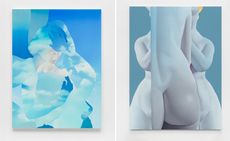 The cosmos meets art history in Vivian Greven’s New York exhibition
The cosmos meets art history in Vivian Greven’s New York exhibitionVivian Greven’s ‘When the Sun Hits the Moon’, at Perrotin in New York City, is the artist’s first solo exhibition in the USA
By Emily McDermott Published
-
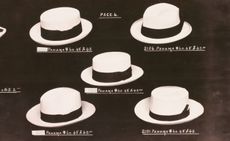 The Met’s ‘The Real Thing: Unpacking Product Photography’ dissects the avant-garde in early advertising
The Met’s ‘The Real Thing: Unpacking Product Photography’ dissects the avant-garde in early advertisingA new exhibition at The Metropolitan Museum of Art in New York explores the role of product photography and advertising in shaping the visual language of modernism
By Zoe Whitfield Published
-
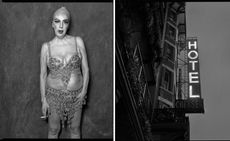 Tony Notarberardino’s Chelsea Hotel Portraits preserve a slice of bygone New York life
Tony Notarberardino’s Chelsea Hotel Portraits preserve a slice of bygone New York life‘Tony Notarberardino: Chelsea Hotel Portraits, 1994-2010’, on show at New York’s ACA Galleries, is the photographer’s ode to the storied hotel he calls home and its eclectic clientele
By Hannah Silver Published
-
 ‘LA Gun Club’: artist Jane Hilton on who’s shooting who
‘LA Gun Club’: artist Jane Hilton on who’s shooting who‘LA Gun Club’, an exhibition by Jane Hilton at New York’s Palo Gallery, explores American gun culture through a study of targets and shooters
By Hannah Silver Published
-
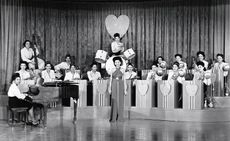 Detroit Institute of Arts celebrates Black cinema
Detroit Institute of Arts celebrates Black cinema‘Regeneration: Black Cinema 1898-1971’ at the Detroit Institute of Arts (DIA) brings lost or forgotten films, filmmakers and performers to a contemporary audience
By Anne Soward Published
-
 BLUM marks 30 years of Japanese contemporary art in America
BLUM marks 30 years of Japanese contemporary art in AmericaBLUM will take ‘Thirty Years: Written with a Splash of Blood’ to its New York space in September 2024, continuing its celebration of Japanese contemporary art in America
By Timothy Anscombe-Bell Published
-
 Todd Gray’s sculptural photography collages defy dimension, linearity and narrative
Todd Gray’s sculptural photography collages defy dimension, linearity and narrativeIn Todd Gray’s New York exhibition, he revisits his 40-year archive, fragmented into elaborated frames that open doors for new readings
By Osman Can Yerebakan Published